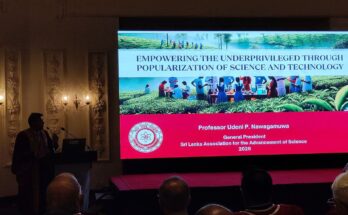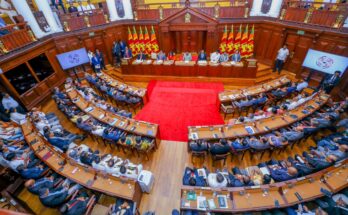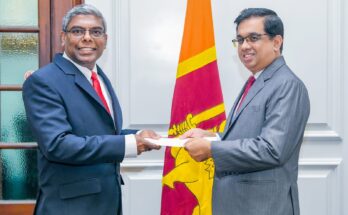Making a rational citizen should be an objective of mass media if they have a feeling of responsibility in their social role. Rational citizens make rational decisions which probably supports progress of the society. However, if the media is sharing anti-science, pseudoscience or fake science information, that would be very much dangerous for the society as everybody in the society can not distinguish right science facts but depends on what was read or heard.
Normally, good science communications happen in scientific forums, conferences, universities and research stations and etc. Sri Lankan media are reluctant to report them as they are not well trained to get sophisticated knowledge while educated society is also not good at communication to general public.
Sri Lankan scientists and undergraduates are performing thousands of researches in a year within the country while almost none makes a news. This has to be changed as soon as possible. Otherwise this poses a lot of challenges which can be lethal for generations sometimes.
Recently, there was a news in Daily News newspaper on “Sena Caterpillar” titled “A Rapid method to control Sena affected land in one single day” on 05th February 2019 that Wayamba University had developed a Genetically Modified (GM) Caterpillar to solve the burning issue. When it was read, we felt it was a nice “science fiction” as we know how much time, technology and efforts must be there to develop a GMO (Genetically Modified Organism) which was not legally approved in Sri Lanka. Such an idealistic invention story could cause a huge confusion in the country. The technology sequences mentioned had no issues but it actually can take over several years to see results. When the mentioned scientists were contacted they were clueless as they were too unaware of such an experiment. That article could be a cheap political gain for someone but totally misleading public. And also they have unethically used names of renowned experts of the country.
This is only one side of miscommunication of science in media. Sometimes back the glyphosate hypothesis on CKDu (Chronic Kidney Disease of unknown etiology) caused a huge confusion as it was misquoted as the only cause of the kidney disease. Another way of miscommunication is misleading advertisements on food, beverages and cosmetics on media. Most of the advertisements falsely promise of extraordinary results. Most dangerous form is the miscommunications through various lobbying groups. They can interfere into political arena and can make decisions over nationally important matters. Astrologers are such a powerful lobbying group as they are advising the most of the top leaders of the country.
This forces us to have a certain team of experts to read science articles before publishing in general media. However, that again can be a hindrance to the science popularization among general public. At least there should be a common standard for mass media to cross check with another expert in the same area before publishing. Such experts can be found in universities or through a reputed science society.
The Hope
Sri Lanka has had a great science body called “Vidyabhiwardhana sangamaya” or Sri Lanka Association for Advancement of Science (SLAAS) since 1944. This body consists of most of the scientists, researchers and graduates of various disciplines including biosciences, chemistry, medicine, engineering, agriculture, computer sciences and social sciences and etc. Currently it is the largest science society functioning in the country. The SLAAS has subcommittees for media resources and science popularization etc. All general media personnel should be able to refer to this prestigious body to get any matter verified if necessary before publishing a science related information.
Fortunately, Sri Lanka has got a new association called “Sri Lanka Association for Science Communicators” with the direction of Ministry of Science Technology and Research and SLAAS. We believe that this association can play a vital role in right dissemination of science knowledge and happenings for the general public and other media personnel. This is an open platform for science communicators and journalists to get together and develop their skills in sourcing right science information and disseminating science information in a proper and accurate manner.
We see the future be more productive and effective in science communication for general public.





Great article.
Thank you